Test drive a Porsche 911 Carrera S (992) with PASM sport chassis, rear axle, and PDCC|What difference does it make with or without options?
Release date: Nov. 19, 2023
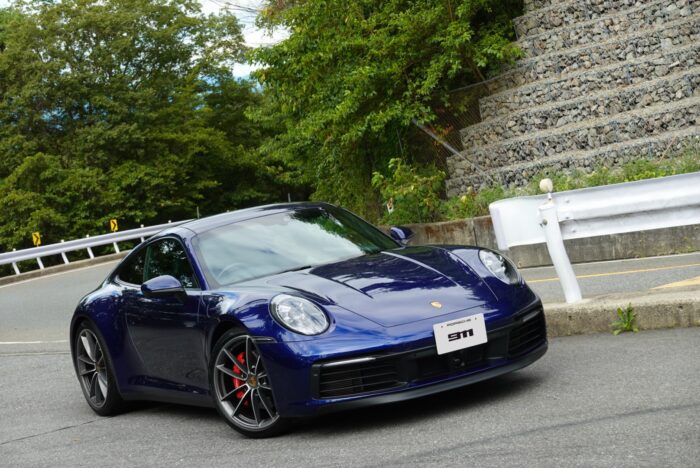
contents
992 Carrera S with full of options
My brother bought another car.
My brother is the complete opposite of me, a Ferrari lover, a G-Class lover, a Lambo lover, an Okinawa lover, a Richard Mille lover, and a Hublot lover, who seems to represent the typical "successful man" as best as he can be pictured (laughs).
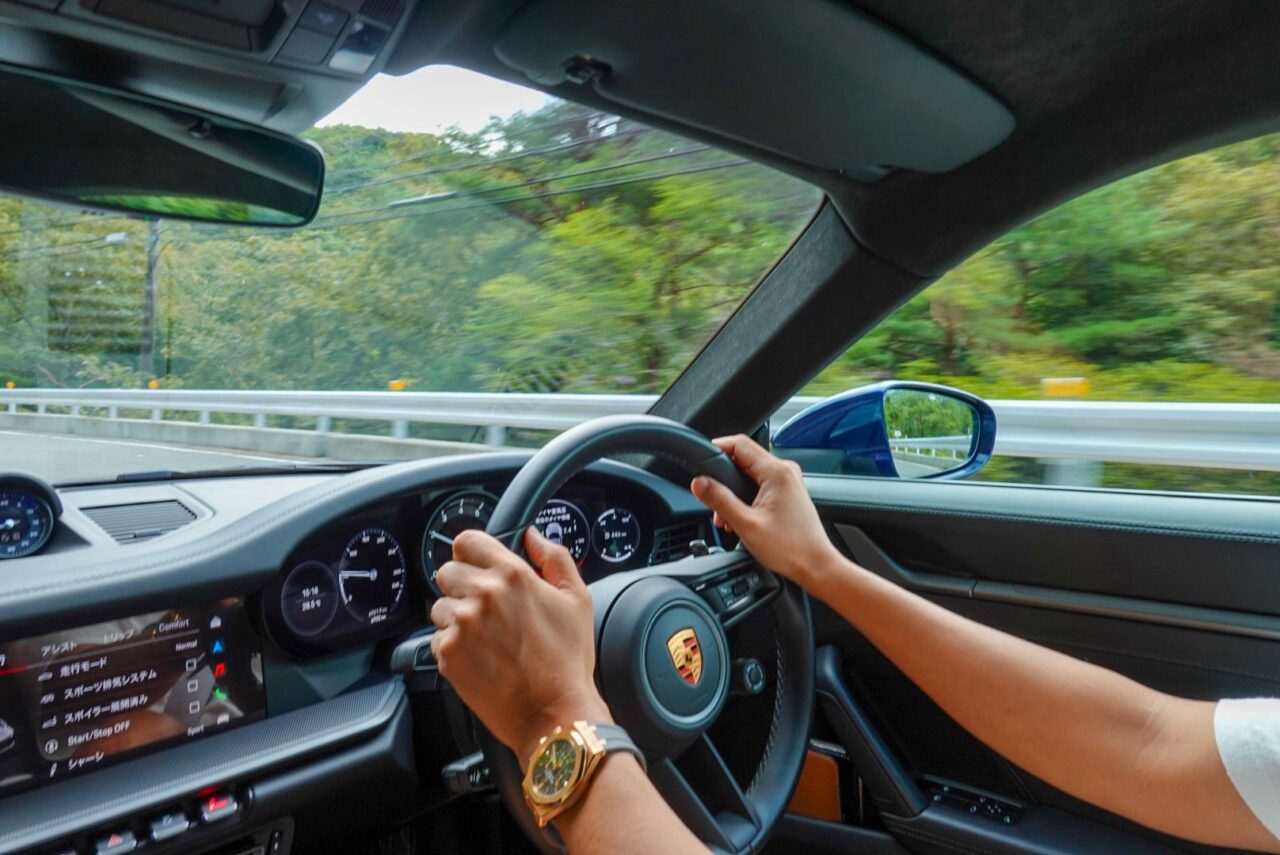
So, by nature, he is not a fan of modest cars that specialize in driving like a Porsche, and he is the kind of person who always complains about Porsche's lack of features and the plainness of its interior.
His brother bought a Porsche for the first time in a long time, which is rare.
This time, it is a 992 Carrera S that was used as a test car at a certain dealer, with options that exceeded 5 million yen.
The body color is Gentian Blue with the popular classic wheels, the interior is leather package with ventilated Sport Plus seats, and the driving options are almost fully equipped with Sport Chrono Package, Sport Exhaust, Sport Suspension with PASM (PASM Sport Chassis), rear axle steering, and PDCC. The Carrera S is a super luxury car with PASM suspension (PASM sport chassis), rear axle steering, and PDCC.
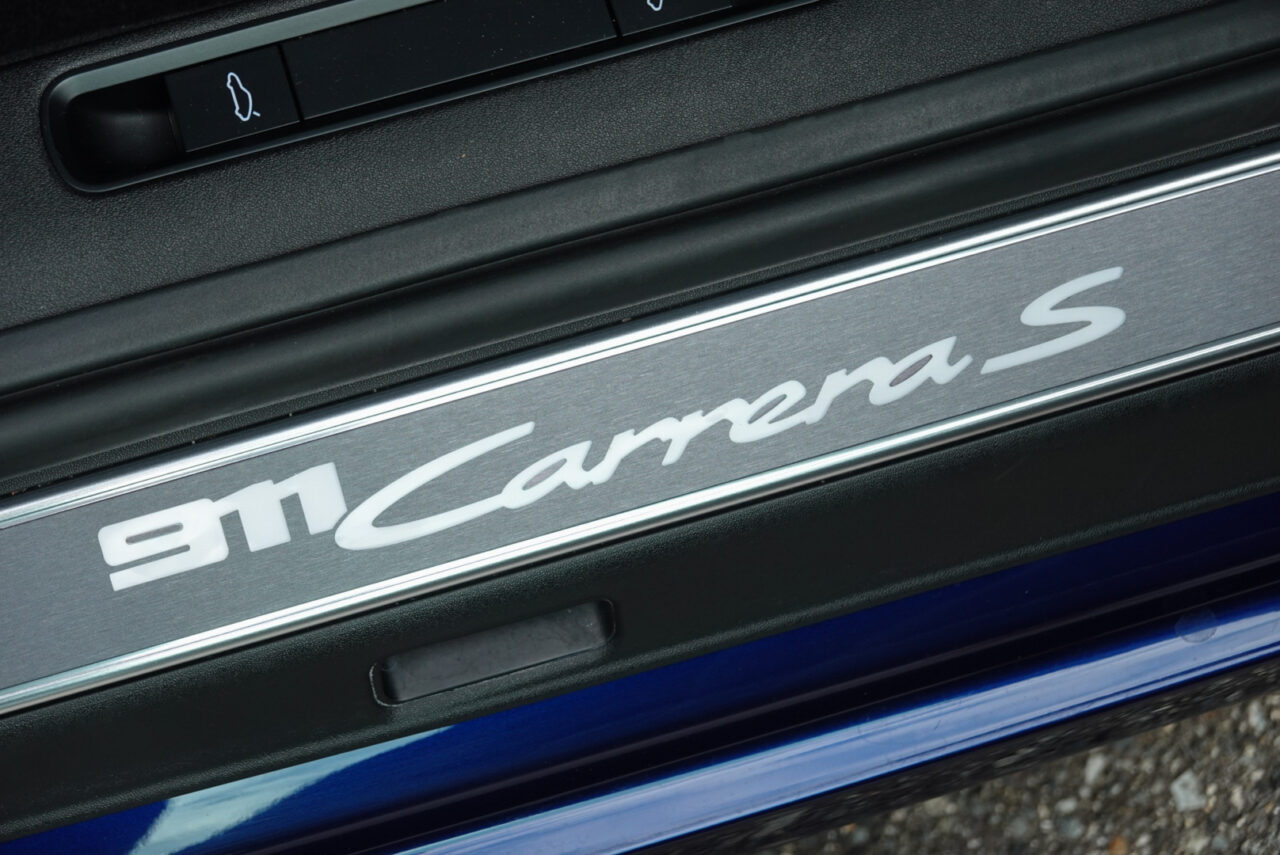
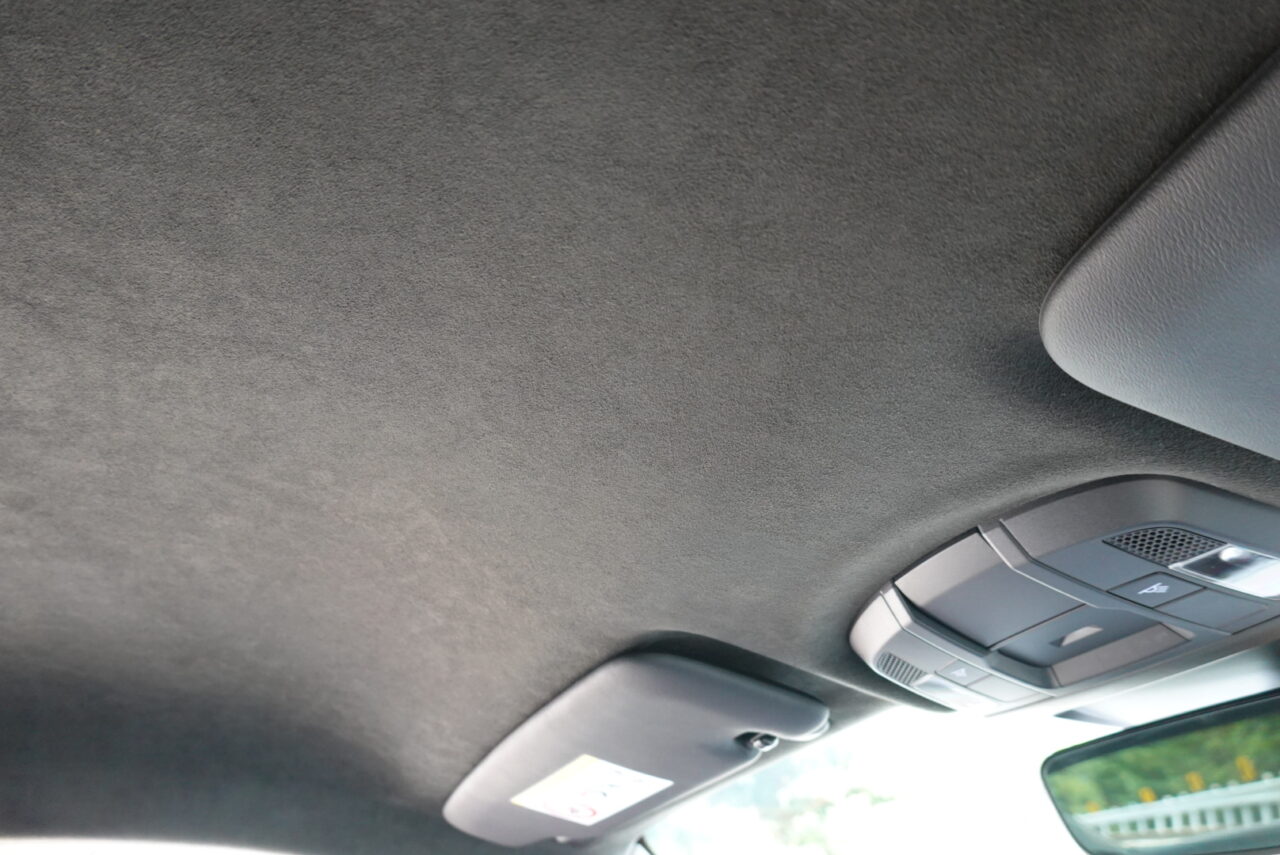
Optional Race-Tex roof lining.
My brother says he can never remove this option. He says, "I don't understand the point of an interior that doesn't have this on a 20 million dollar car." I don't understand what he means that I can't remove this lol.
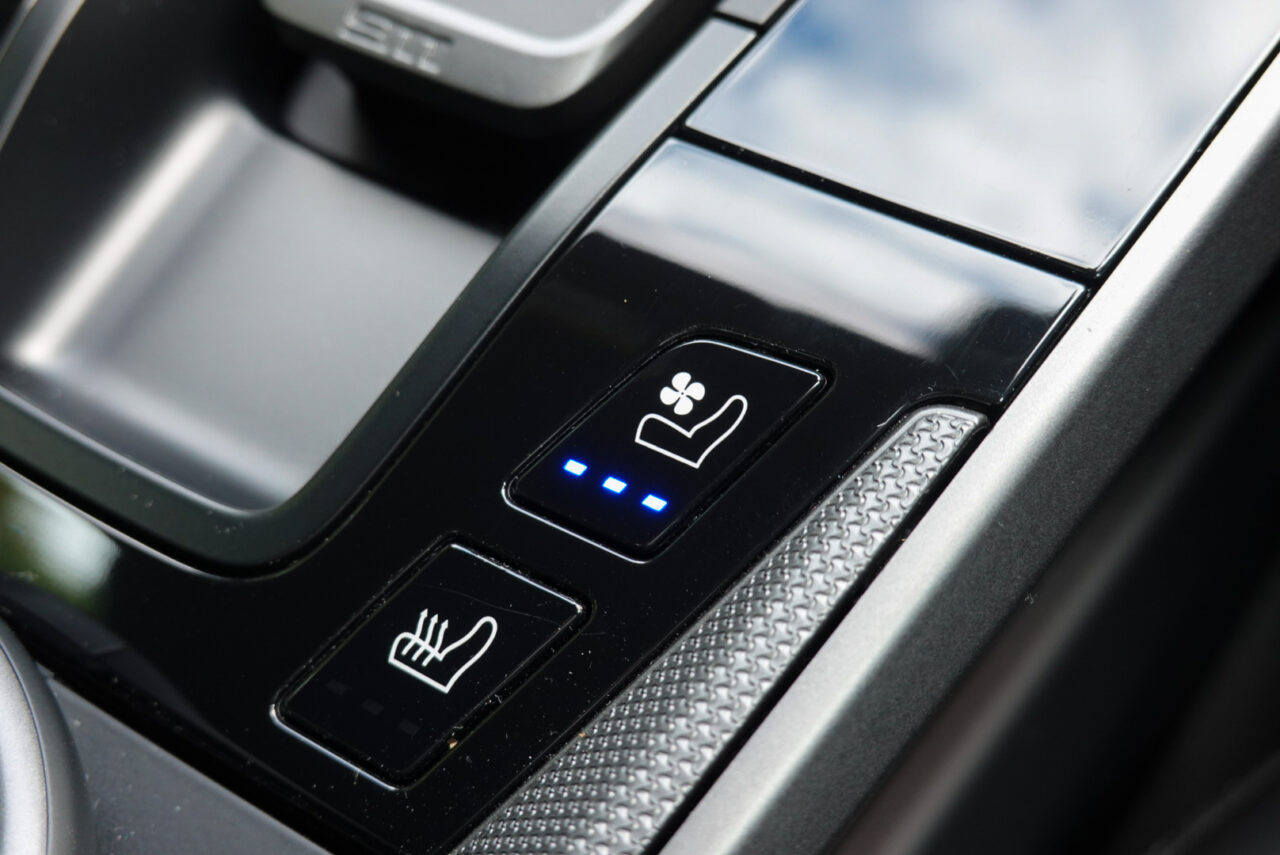
Seats are ventilated
I have test driven the Carrera S several times in the past, but never with such a full array of options.
This time, thePerspective of the effect of the 992 options, mainly with a comparison with our Carrera T and Carrera Cabriolet.I would like to review this in
About PASM Sports
First, I would like to review the PASM Sport from a riding perspective.
The PASM Sport is a vehicle height reduction of -10 mm and a more sport-oriented damping force setting. This is usually available on Carrera S and higher grades, with the exception of the Carrera T, for which it is standard.
I'm used to the PASM Sport chassis on the Carrera T, but when it's on the Carrera S, the impression is a little different.
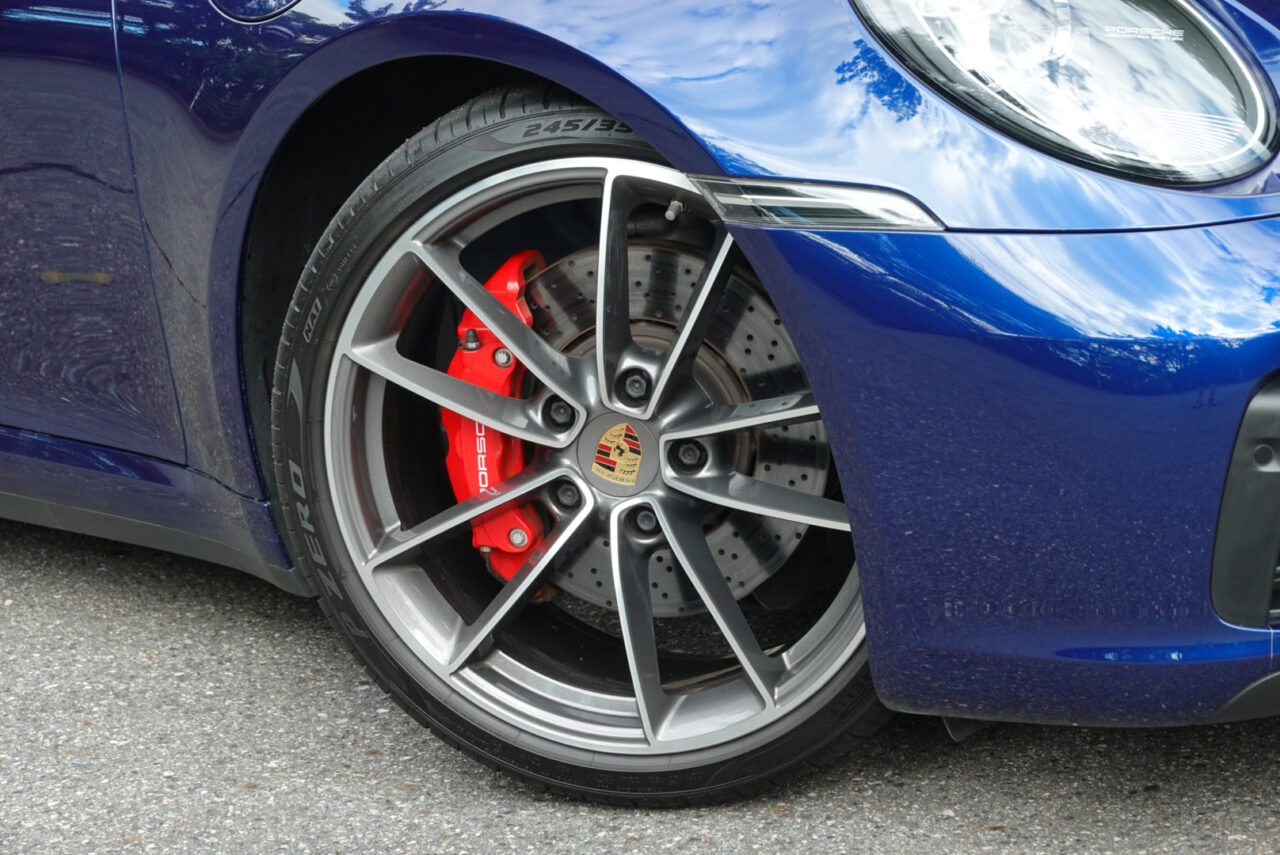
In my case, two fingers can fit in the gap between the tire and the fender, PASM Sport, and three fingers can fit in the gap between the tire and the fender, normal PASM.
Originally, the Carrera T feels light on the nose, partly due to the lithium-ion battery, and the friction of the electric steering is very low. This gives it a very strong sense of lightness,The Carrera S is not as nimble. It also differs from the sports chassis of the Carrera GTS, which feels even stiffer.
It was a new discovery to see how different grades of the same PASM Sport can be.
In addition, theIt is more agile than the Carrera Cabriolet with regular PASM that we have at home, and the tires have a stronger ground feel.In terms of ride quality, the tires are a bit knobbly when ridden with standard pressure, but much better if the tire pressure is set to comfort pressure. It is safe to say that the car is comfortable enough to drive on smooth roads.
Nevertheless, it is undeniably a bit firmer than a regular PASM. So it is a bit shaky on rough surfaces and does not enter the comfort zone at high speeds unless the speed is very high.
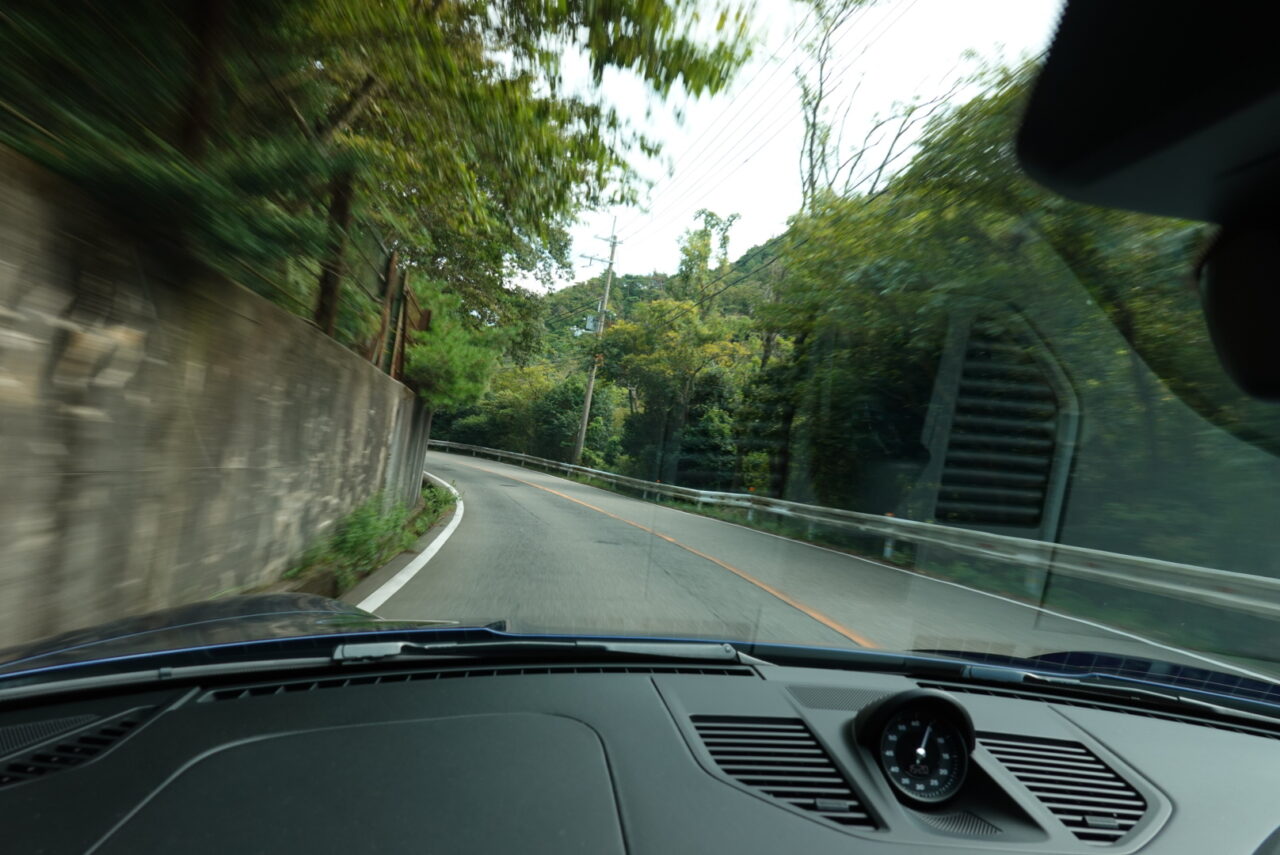
However, the PASM sports chassis wins hands down in terms of turning and agility on winding roads.The original 992 PASM is also a suspension that turns well in another dimension, but it is more than that.
If you choose a PASM sport chassis, it should be chosen by those who really want driving comfort and performance on winding roads, and if you only use it as a date car and choose it for its cool appeal of only -10mm, you will regret it one day when you compare it with a regular PASM.
Rear axle steering
This is an option that does not show up on the exterior at all,It is an option that only people who really like driving Porsche would add.And since it doesn't show in appearance, it won't be a big plus in resale.
However, I personally think that a used car with rear axle steering would be a good alternative for about $500,000 more.
The 911 is originally a sports car with a short wheelbase and turns well. However, because it is a RR car, people who are not accustomed to RR cars sometimes feel uncomfortable with it. My brother, in particular, is not familiar with RR cars, so he often feels that the way the 911 turns is different from other cars, even though it is a 992.
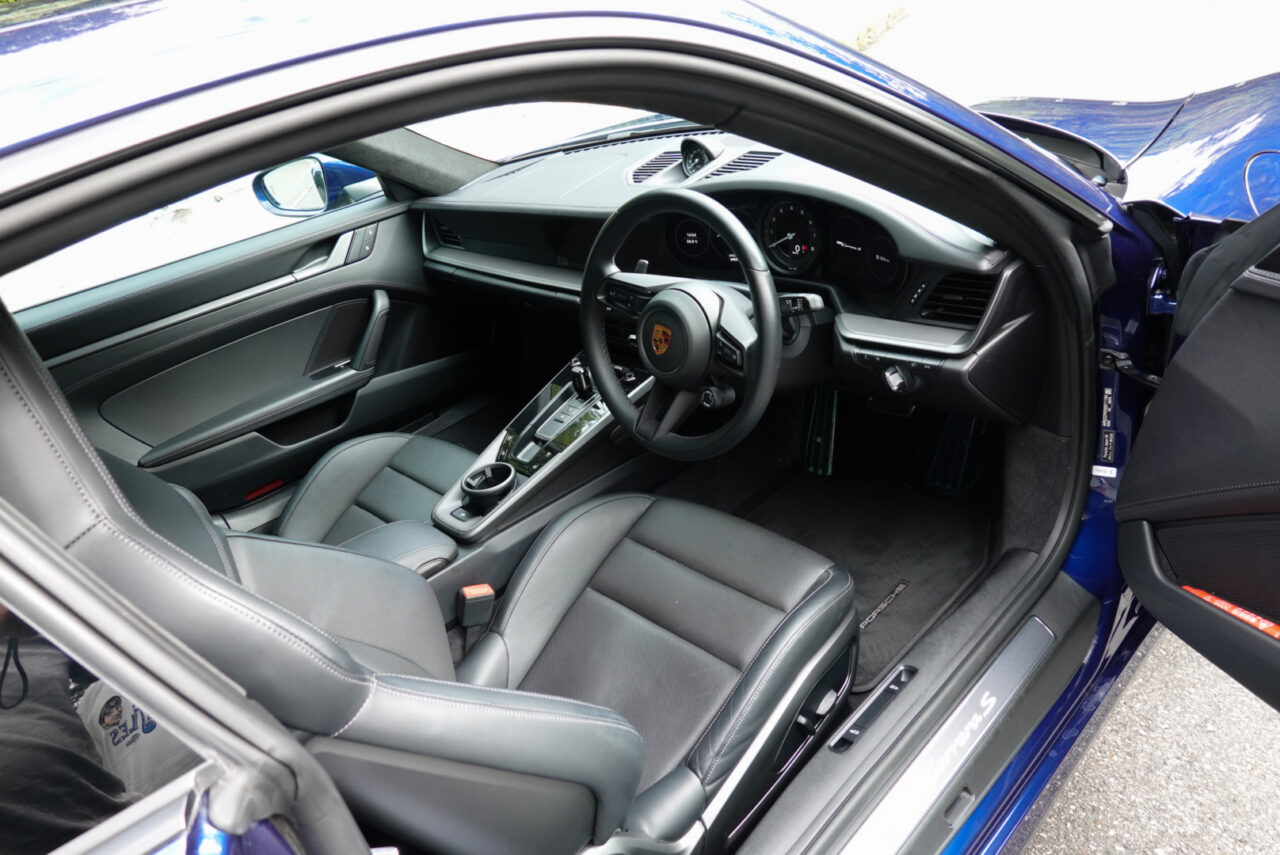
Leather interior package plus sport seats plus (4-way)
The unique way of turning around the rear, with the center of the axis of rotation located at the rear, can be clearly seen when compared to the 718 and other models.
When the rear axle steering is added to the 911, it gives the impression that the axis of rotation is much more forward. In my Carrera Cabriolet, which does not have rear axle steering, the impression is that the front end of the car moves a lot around the rear (although it still turns very comfortably),With the Carrera S and Carrera T this time, it changes to a turn that is similar to a midship.
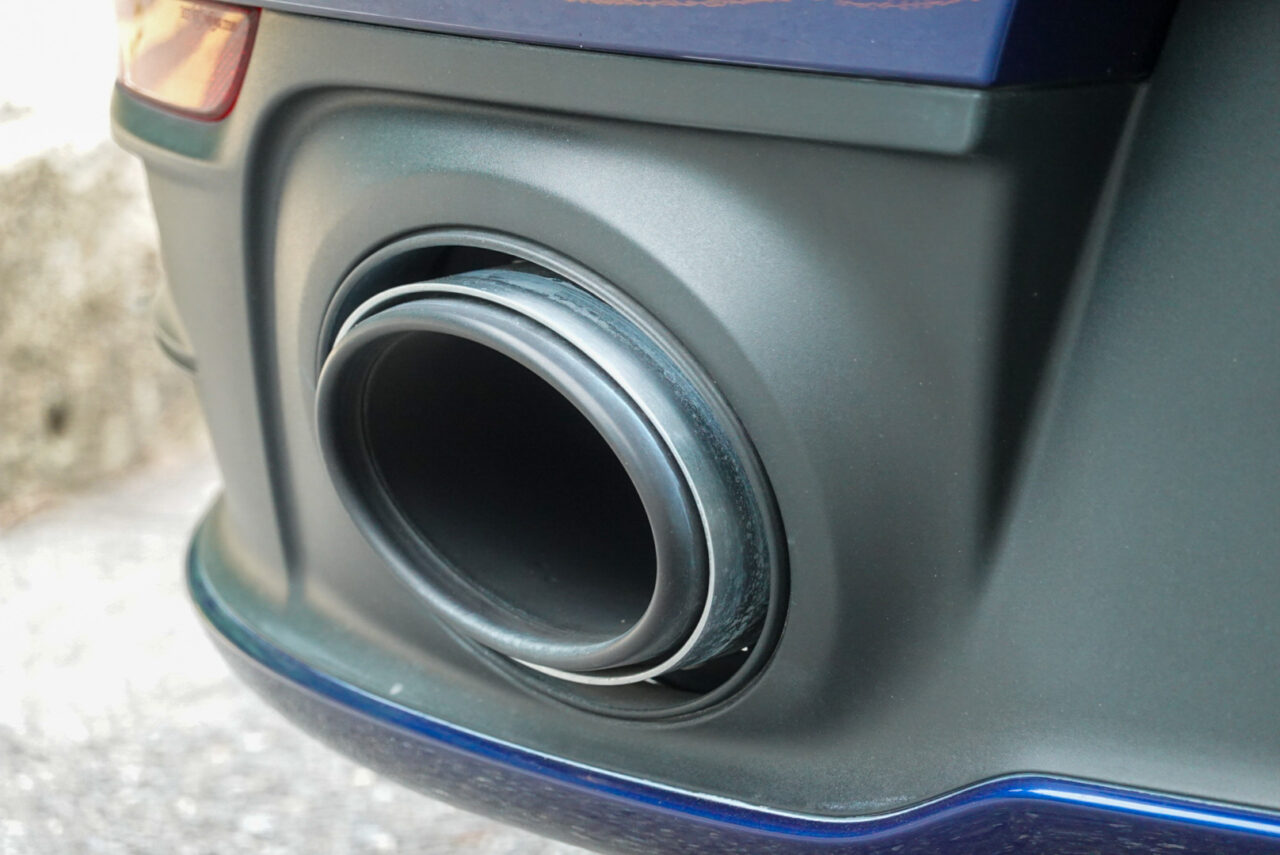
sports exhaust
I wouldn't say up to a 718, but you can expect the car to move somewhere between a 911 and a 718.
What is even more different than the difference in movement is the ability to turn in tight corners.On low-speed corners such as hairpin turns, the car seems to turn without any burden anywhere.It turns smoothly and cleanly in a circular arc.
Of course, this option makes it easier to maneuver in parking lots, make U-turns, etc., but it is recommended for those who want to enjoy the performance and even more pleasant feeling of turning.
PDCC
Finally, about PDCC, I honestly could not tell much difference in this Carrera S.
In some situations, the ride felt more comfortable when the suspension was turned on (the suspension is set to the sport setting), but in other situations, it did not, giving a different impression depending on the road surface.
I think the reason for this is that in the case of the Carrera S this time, it was equipped with a PASM sports chassis.Since the vehicle height is low to begin with and the suspension settings are firm, there is little roll. Therefore, the roll control by PDCC may have been difficult to understand.
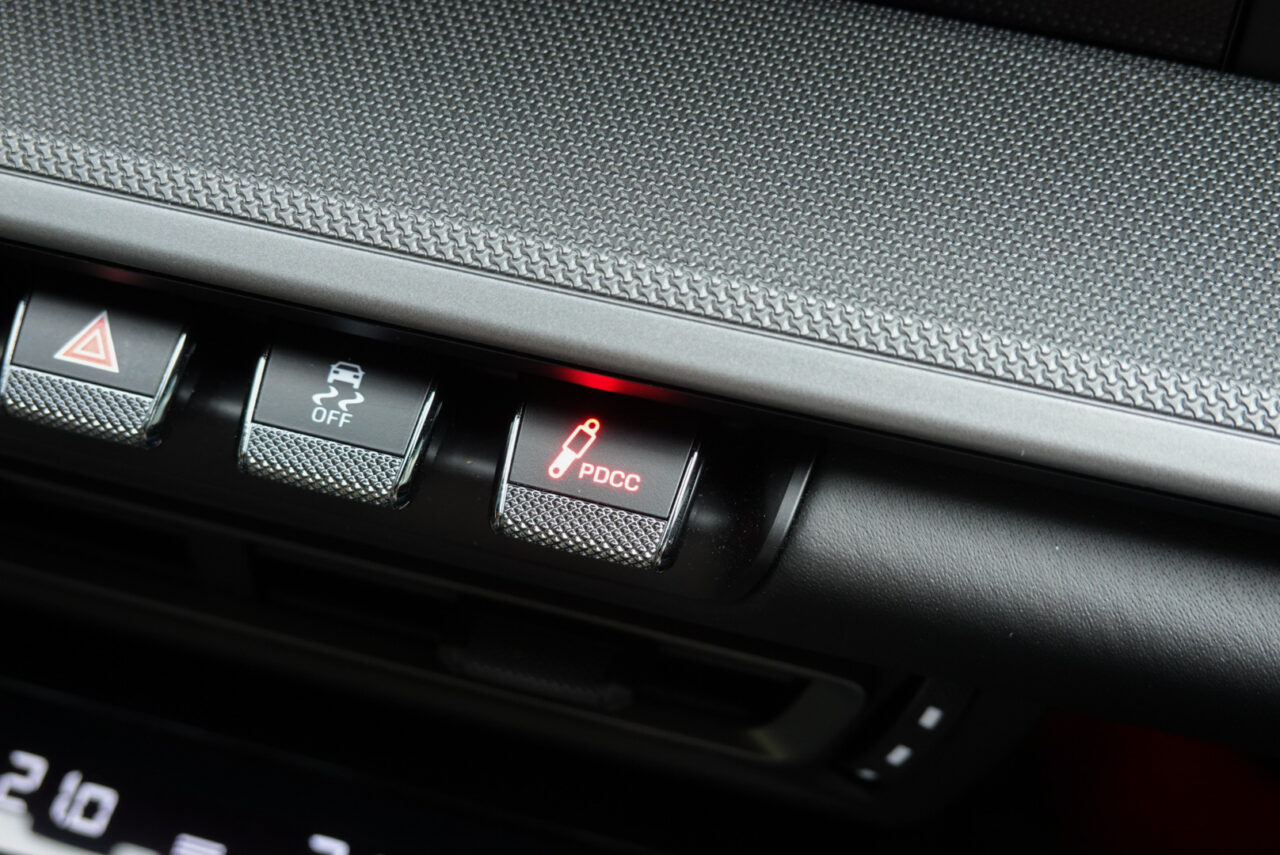
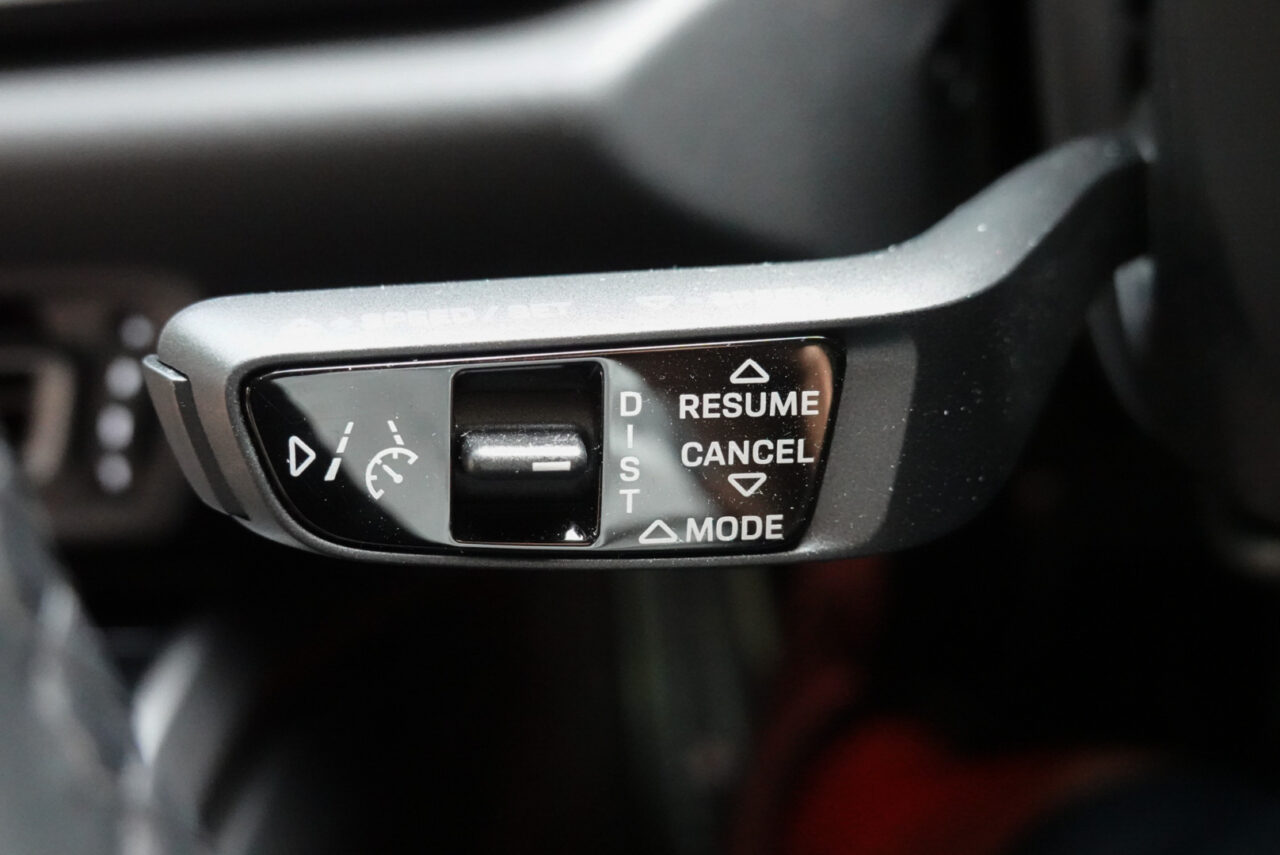
It is obvious that there is less roll than in a Carrera Cabriolet, which usually has only PASM, but it is difficult to determine whether this is due to the PDCC or the PASM sports chassis.
In fact, compared to the Carrera T, which only has the PASM sport chassis, there is not much difference in the amount of roll or the way it turns. I somehow think that the Carrera S has slightly less roll when the PDCC is turned on.
I have driven Porsches equipped with PDCC in the past, including 911, Cayenne, Taikan, and Panamera, but the effect is most clearly visible on the Cayenne. The effect of roll control can be seen most clearly on the Cayenne because of its high ride height.Next, the Panamera and the Taikan are also easy to understand. Since the Taikan is an EV, it originally has a very low center of gravity and little sway, but the quality of the flat feeling is different with and without PDCC.
Considering this experience, I think that the effect of PDCC is easier to understand when the vehicle is at a certain height. Therefore, in terms of combination, in the case of the 911, I think it is easier to understand the effect of PDCC in combination with normal PASM.
991 options are Porsche seasoning.
This review focuses on how the options available on the 992 Carrera S improve its driving performance: the PASM sport chassis, rear axle steering, and PDCC prove to be important elements that transform the car's movement into something more refined and enhance its driving pleasure.
The PASM sport chassis enhances driving characteristics, the rear axle steering significantly improves handling precision, PDCC contributes to subtle adjustments in ride quality while increasing performance, and comfort is maintained even on long drives. We feel that these options are not just for performance, but also to improve even the finest feel while driving.
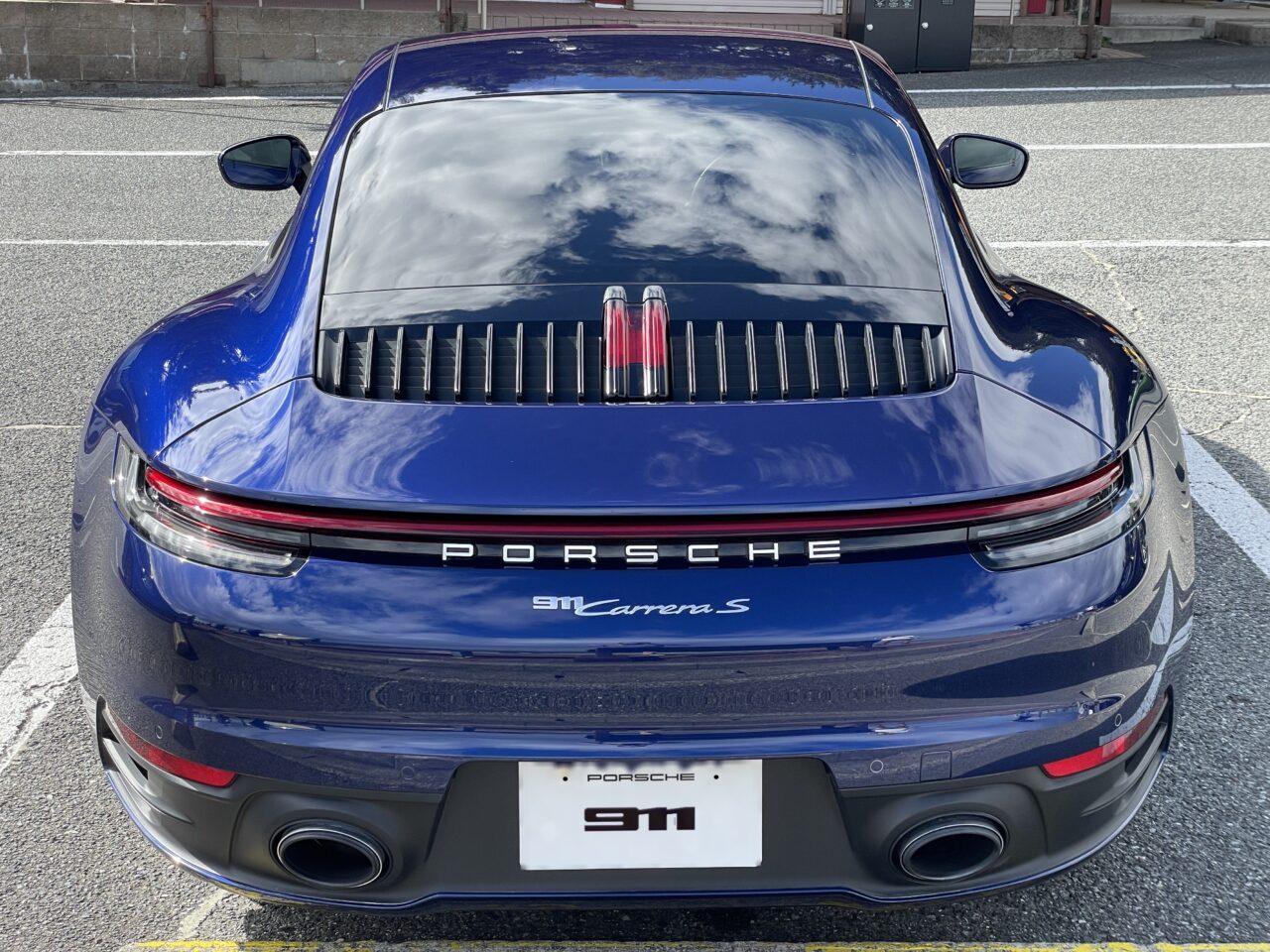
Gentian blue is really cool.
The choice of these options depends on personal preference and driving style.
A simple Porsche is fun enough to drive, but the Porsche options are like seasonings to add to a dish. Just as some people like strong flavors in their food, others like light flavors or just salt, we hope that you will find the options that suit your own taste and create a Porsche that will become your best partner.
We hope this article will help you to do so.
Follow me if you like this blog!


Comment ( 0 )
Trackbacks are closed.
No comments yet.